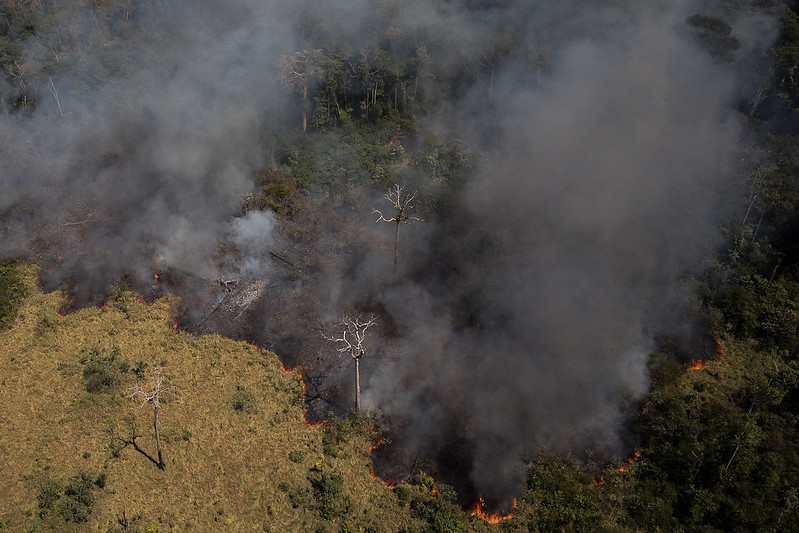The original plan, implemented in 2004, successfully reduced the annual deforestation rate in the Amazon from 28,000 km² to approximately 4,000 km². Phase 5 of PPCDAm emphasizes the scientific basis of the proposed initiatives, incorporating advancements in Amazonian science.
The Government launched the new Action Plan for the Prevention and Control of Deforestation in the Legal Amazon (PPCDAm). In its 5th phase, the plan has actions on the climate area and for the expansion and creation of Conservation Units. It includes more than 200 actions to reduce deforestation in the Amazon.
The original 2004 Plan was highly effective, reducing the annual rate of deforestation from 28,000 km² to 4,000 km². In formulating the new plan, what stands out in this phase 5 of the PPCDAm is the level of the scientific basis of the proposed initiatives, incorporating the latest findings of Amazonian Science. A dense and technical analysis was carried out on deforestation dynamics, consolidating what the main specialists in the area have been discussing as essential to stop deforestation. The Mapbiomas system and the technical improvement of INPE’s remote sensing system help in the innovations of the new PPCDAm.
The PPCDAm phase 5 comprises four central axes of action: sustainable, productive activities, environmental monitoring and control, land and territorial organization, and normative and economic instruments. The component of promoting sustainable, productive activities is essential for development in the region, based on activities that are not predatory to the forest but that benefit from it.
Integration with improving the rural environmental register (CAR) and articulation with the states in inspection actions is also important. Creating traceability systems for agricultural and wood products in the Amazon is planned. Monitoring fires and deforestation by INPE and other systems is fundamental, complemented by the MapBiomas System, which can give the history of land use in each Amazonian region. This new phase includes the need for innovation and technical assistance suited to the regional realities of the peoples of the Amazon and the acceleration of sustainable livestock farming. Support for tourist activities, a little-explored potential in the Amazon, is also mentioned. Also, part of the objectives of this axis are the promotion of sustainable forest management, the recovery of deforested or degraded areas, and the strengthening of articulation with the states.
An important novelty is the inclusion of forest degradation, based on recent scientific works, which show that the forest is losing carbon not only through deforestation but also through degradation caused by the strong increase in temperature in the ecosystem and reduction in precipitation caused by changes global climate. Another important novelty is the question of territorial ordering in relation to public lands that have not been earmarked. The alignment between large infrastructure projects with national targets for reducing deforestation and greenhouse gas emissions is incorporated. The need to identify and incorporate the vacant lands still existing in the region into the Union's assets and the need to allocate 29.5 million hectares of unused public forests were recognized. This is a measure that several NGOs have emphasized over the last few years.
An important novelty is the inclusion of forest degradation, based on recent scientific works, which show that the forest is losing carbon not only through deforestation but also through degradation caused by the strong increase in temperature in the ecosystem and reduction in precipitation caused by changes global climate. Another important novelty is the question of territorial ordering in relation to public lands that have not been earmarked.
Paulo Artaxo
Other goals of the plan involve immediately embargoing 50% of the area illegally deforested in federal Conservation Units and increasing by 10% the number of environmental infraction notices judged in the first instance – measures to be implemented as early as 2024. cancel 100% of the irregular Rural Environmental Registry (CAR) registrations superimposed on federal Public Lands by 2027.
Brazil has a firm commitment to zero deforestation in the Amazon by 2030. Will it succeed? One of the biggest problems of the Brazilian executive is a legislature that continues to structure policies for the destruction of Brazilian ecosystems. And it always weakens the environmental policies and those associated with the native peoples of the new government. It will be a tough fight, but the executive cannot let his guard down, including on the important issue of the time frame of indigenous territories. The international scenario strongly supports the implemented policies, including increasing the Amazon Fund's cash to provide society with the financial resources needed to zero deforestation in 2030, which is essential to reduce the impact of climate change. Redoing the destruction of the firefighting structure of IBAMA carried out by the previous government will not be easy, as well as acting in partnership with city halls and state governments that favor crime in large areas of the Amazon.
The PPCDAm is an essential public policy for our country. We have to find a sustainable path for the Amazon, and that involves putting an end to illegal activities, an end to the illegal invasion of public and indigenous lands, and an end to illegal mining. This is the only possible way to reduce social and regional inequalities in our country and to integrate Amazon into the 17 Sustainable Development Goals.
The opinions expressed in this article are the writer’s own.



